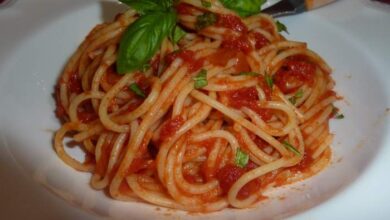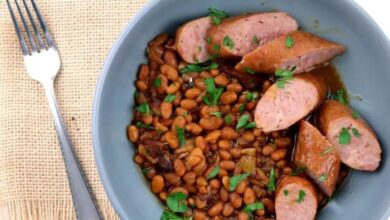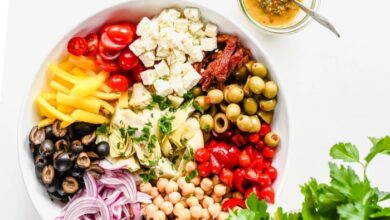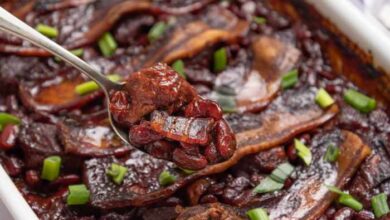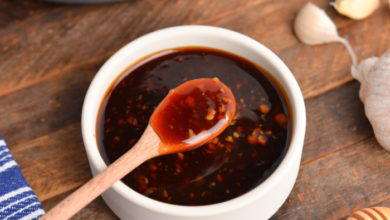
Boiled Potatoes with Chives: A Simple and Flavorful Side Dish
Boiled potatoes with chives are a classic side dish that’s perfect for any meal. The simplicity of the dish allows the natural flavors of the potatoes to shine through, while the chives add a touch of freshness and a hint of oniony flavor.
Whether you’re serving them alongside a roast chicken, a hearty stew, or simply enjoying them as a snack, boiled potatoes with chives are sure to please.
This article will explore the art of preparing boiled potatoes with chives, from selecting the right potatoes to achieving the perfect texture and incorporating the aromatic chives. We’ll also delve into the culinary versatility of chives and their unique flavor profile.
Join us as we unravel the secrets behind this timeless side dish and discover how to elevate it to new heights.
Boiled Potatoes
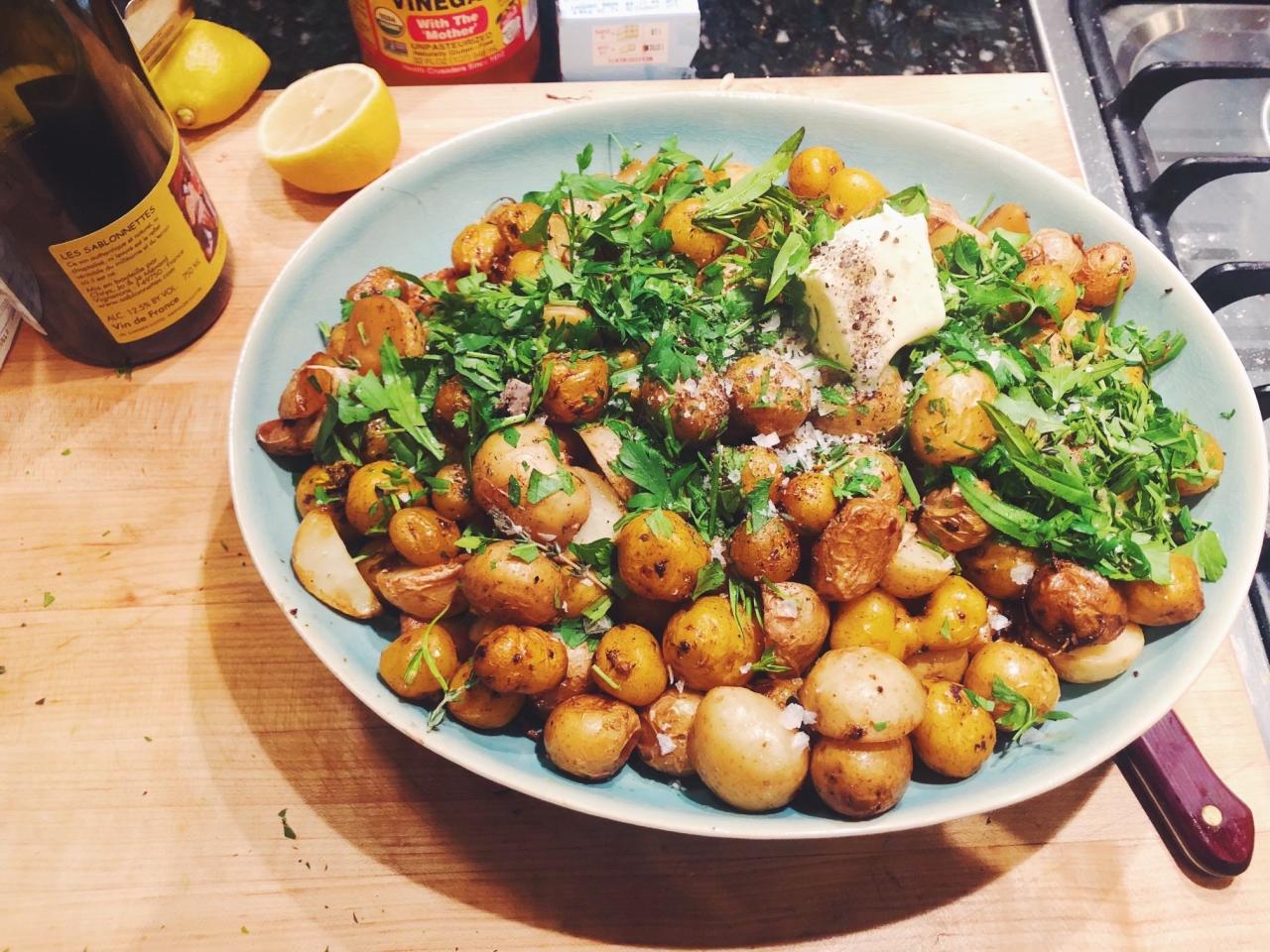
Boiled potatoes are a versatile and essential ingredient in many cuisines around the world. They can be enjoyed as a simple side dish, used in salads, soups, stews, or even mashed and served as a creamy accompaniment to various dishes.
Mastering the art of boiling potatoes to achieve the perfect texture is key to unlocking their full potential.
Potato Types for Boiling
The type of potato you choose for boiling significantly impacts the final texture and outcome. Some potatoes are better suited for boiling than others, depending on their starch content and texture.
- Starchy Potatoes:These potatoes have a high starch content, resulting in a fluffy and dry texture when boiled. They are ideal for mashing, roasting, or making potato salad. Popular starchy potato varieties include Russet, Idaho, and Yukon Gold.
- Waxy Potatoes:These potatoes have a lower starch content and a higher moisture content, leading to a firm and waxy texture after boiling. They hold their shape well, making them perfect for salads, potato pancakes, or serving whole. Popular waxy potato varieties include Red Bliss, Fingerling, and New Potatoes.
- All-Purpose Potatoes:These potatoes fall somewhere in between starchy and waxy, offering a balanced texture that works well for various applications. They can be boiled, mashed, roasted, or used in salads. Popular all-purpose potato varieties include Yellow Finn, Red Pontiac, and Kennebec.
Boiling Potatoes: A Step-by-Step Guide
Boiling potatoes is a simple yet crucial skill in the kitchen. Here’s a step-by-step guide to ensure perfectly cooked potatoes:
- Prepare the Potatoes:Wash the potatoes thoroughly and peel them if desired. For a rustic look, you can leave the skin on, but ensure it’s scrubbed clean. Cut larger potatoes into even-sized pieces to ensure consistent cooking.
- Use Cold Water:It’s essential to start boiling the potatoes in cold water. This allows the potatoes to cook evenly and prevents them from becoming mushy.
- Bring to a Boil:Add the potatoes to a large pot filled with cold water, ensuring they are fully submerged. Bring the water to a rolling boil over medium-high heat.
- Reduce Heat and Simmer:Once the water boils, reduce the heat to a gentle simmer and cover the pot. Simmer the potatoes until tender. The cooking time will vary depending on the size and type of potatoes.
- Test for Doneness:To check if the potatoes are cooked, insert a fork or knife into the largest potato piece. If it slides in easily with minimal resistance, the potatoes are done.
- Drain and Serve:Drain the potatoes in a colander and allow them to cool slightly before using them in your desired recipe.
The Importance of Using Cold Water
Boiling potatoes in cold water is crucial for achieving a consistently cooked and flavorful result. When potatoes are added to cold water, they heat up gradually, allowing the starch to gelatinize evenly throughout the potato. This process ensures a smooth and creamy texture, preventing the potatoes from becoming overly soft or mushy.
Conversely, adding potatoes to boiling water can cause the outer layer to cook too quickly, while the inside remains raw. This results in unevenly cooked potatoes with a tough exterior and a soft, mushy interior.
Cooking Times for Different Potato Sizes and Types
The cooking time for boiled potatoes varies depending on their size, type, and desired texture.
- Small Potatoes:Small potatoes, such as new potatoes or fingerlings, typically cook in 15-20 minutes.
- Medium Potatoes:Medium-sized potatoes, like Yukon Gold or Red Bliss, generally take 20-30 minutes to cook.
- Large Potatoes:Large potatoes, such as Russet or Idaho, may require 30-40 minutes of cooking time.
It’s important to note that these are approximate times, and it’s always best to test for doneness using a fork or knife.
Chives: Boiled Potatoes With Chives
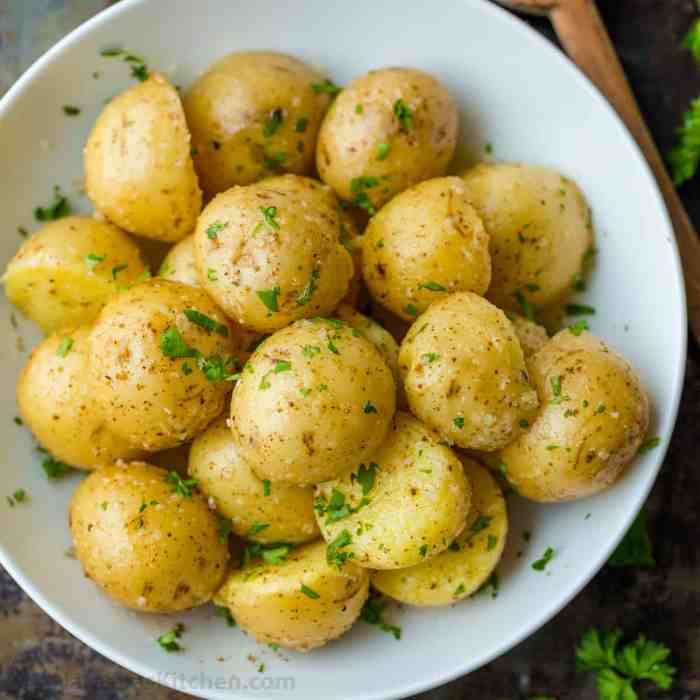
Chives, with their delicate, grassy flavor, add a touch of elegance and freshness to a wide array of dishes. They are a staple in many cuisines around the world, adding a subtle yet distinct flavor that complements both savory and sweet dishes.
Flavor Profile and Culinary Uses
Chives have a mild, oniony flavor with a hint of garlic, making them a versatile ingredient that can be used to enhance both savory and sweet dishes. They add a bright, fresh note to soups, salads, dips, and sauces, and can be used to garnish dishes for a touch of color and flavor.
- Savory Dishes:Chives are often used in soups, stews, and sauces to add a subtle oniony flavor. They are also a popular ingredient in dips, spreads, and dressings, and can be used to garnish dishes like eggs, potatoes, and grilled meats.
- Sweet Dishes:While chives are primarily known for their savory applications, they can also be used to add a unique flavor to sweet dishes. For example, they can be used to garnish desserts like fruit salads or ice cream, or added to pancake batter for a subtle savory note.
Nutritional Benefits of Chives, Boiled potatoes with chives
Chives are a good source of vitamins and minerals, including vitamin K, vitamin C, and folate. They also contain antioxidants, which may help protect against cell damage.
- Vitamin K:Chives are a good source of vitamin K, which is essential for blood clotting and bone health.
- Vitamin C:Chives contain vitamin C, an antioxidant that helps protect against cell damage and supports the immune system.
- Folate:Chives are a source of folate, a B vitamin that is important for cell growth and development.
- Antioxidants:Chives contain antioxidants, which may help protect against cell damage and reduce the risk of chronic diseases.
Fresh vs. Dried Chives
Fresh chives offer the most intense flavor and aroma, making them ideal for dishes where a strong, vibrant flavor is desired. Dried chives, on the other hand, have a more concentrated flavor and are often used in recipes where a milder, more subtle flavor is preferred.
- Fresh Chives:Fresh chives are readily available at most grocery stores and farmers markets. They have a bright, fresh flavor that is best enjoyed when used in dishes that are cooked quickly or served raw.
- Dried Chives:Dried chives can be found in the spice aisle of most grocery stores. They have a more concentrated flavor than fresh chives and are often used in recipes where a milder, more subtle flavor is preferred. When using dried chives, it’s important to use less than you would fresh chives, as they are more potent.
Storing Chives
To maintain the freshness and flavor of chives, store them properly.
- Fresh Chives:Wrap fresh chives in a damp paper towel and store them in a plastic bag in the refrigerator. They will last for up to a week.
- Dried Chives:Store dried chives in an airtight container in a cool, dark place. They will last for several months.
Boiled potatoes with chives are a classic comfort food, simple and satisfying. Sometimes, though, I crave something sweet and easy, like those three ingredient peanut butter cookies that are always a hit. But after indulging in a few cookies, I always find myself craving that simple, earthy flavor of boiled potatoes with chives again.
It’s a reminder that sometimes the most basic dishes are the most satisfying.
Boiled potatoes with chives are a classic side dish, but sometimes you crave something a bit more vibrant. That’s when I turn to a refreshing three bean salad ii , with its tangy dressing and crunchy textures. It’s a great way to add a burst of flavor and color to any meal, and it pairs perfectly with the simple elegance of boiled potatoes with chives.
Boiled potatoes with chives are a simple yet satisfying side dish. They’re the perfect complement to a hearty meal, like a classic toad in the hole , where the crispy Yorkshire pudding provides a delightful contrast to the creamy potatoes.
The chives add a touch of freshness and a hint of oniony flavor, making this side dish a real crowd-pleaser.

